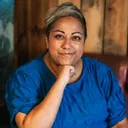
Categories
Curriculum planning
30 November 2023Diversity in the Oak curriculum

Bennie Kara
Co-founder of Diverse Educators and diversity consultant
Bennie Kara, after 20 years in schools as a teacher and leader, now works as a speaker, trainer and consultant on the curriculum. She is the author of ‘A Little Guide for Teachers: Diversity in Schools’ and the Co-Editor of ‘Diverse Educators: A Manifesto’.
Here Bennie shares her thoughts on creating a diverse and inclusive English curriculum and her experience of working with Oak.
It is imperative that teachers and curriculum leaders have a wide selection of resources to choose from when considering the needs of their young people. Diverse content is not always easy to source.
One of the biggest barriers to creating a diverse curriculum is not knowing what we don’t know. Teachers often report their own lack of confidence in choosing resources that touch on race, religion, and sexuality. The reasons for this hesitation vary:
- not identifying with a particular characteristic and having no experience of the nuances associated with it;
- feeling uncomfortable about ‘getting it wrong’; and
- worrying about how the content will be received by the stakeholders of an organisation.
When teachers feel nervous about uncharted territory, the instinct is often to avoid delivering the unfamiliar.
Working with Oak National Academy
I have been working with Oak since its inception. I formed a part of the advisory team that ensured that the early version of the English curriculum was suitably diverse, and I was proud to see some of the conceptual suggestions I made taken on as integral parts of the curriculum.
More recently, I have trained the whole curriculum team on how to create meaningfully diverse content in this new iteration of the curriculum. The intentional approach to diversity is laid out in the curriculum principles, in which we are told that there is “a commitment to breadth and diversity in content, language, texts, media and teachers we use.”
I outlined strategies for diversity that could be used across subjects. The first, expanding the universe of knowledge, encouraged the team to consider where knowledge came from and what knowledge had been lost or sidelined through colonisation and to actively include that knowledge.
Using parallel stories or paired texts was also one of the strategies designed to ensure a balance of representation and the foregrounding of lost voices and perspectives. When we looked at how migration could be a thread through the curriculum, it was with a view to highlighting the impact of migration on knowledge itself, and as a personal journey.
The penultimate strategy on language change and development sought to increase understanding of how people and places have influenced the very words we use.
The final one asked the team to examine what the dominant narratives are around people, places and identities to see whether we could counter them in the curriculum.
This was followed by more in-depth training on diversity in the curriculum for all of Oak's resource creators where the strategies were explored at a lesson level. We explored how diversity can be woven through the curriculum not as a bolt-on, but as an integral part of the sequence of learning.
It was heartening and exciting to see the engagement of the content creators and to see how they would put the strategies into practice.
The Oak English curriculum and diversity
The core strategies of diversity in the curriculum, as outlined above, are woven through our English curriculum. First of all, representation clearly matters.
In the primary offer, there is the presence of global majority groups in texts such as Anna Hibiscus and The Proudest Blue.
We can see women represented in Ada Twist Scientist and in non-fiction references to Florence Nightingale and Mary Seacole, Harriet Tubman and Sophia Duleep Singh.
Windrush is also explored. LGBT families are referenced in And Tango Makes Three. The thread of migration is seen in Swallow’s Kiss and The Unforgotten Coat.
Positive representation of significant figures from the Black community is present in the non-fiction work on Walter Tull. Traditional stories are woven in through texts such as Mulan and Anansi and the Antelope Baby. Disability, often missing from the curriculum, is made present through texts such as El Deafo.
At secondary level, texts such as The Dark Lady by Akala explore race, magic and class. The poetry offer includes work by Grace Nicholls and Gvantsa Kvirikashvili.
Chen Chen’s work, Summer, celebrates identity, as does the work of Maya Angelou. Women’s rights form a unit of work, with reference to Emma Watson, and female footballers. Small Island looks at identity, belonging and community.
Othello is offered as a Shakespeare option, with an exploration of race included. Leave Taking builds on earlier work on the Windrush Generation, and does not shy away from the Brixton Riots and racism. There is a concerted effort to engage with the World and Lives Anthology too.
The hard work of all the curriculum teams and resource creators is one of the many excellent facets of Oak’s work. Now it is over to us as educators to look, see the possibilities, and use the resources wholly or as inspiration for our own curriculum, knowing that there has been an enormous amount of thought in terms of diversity in the curriculum.
Get updates about new resources
We're releasing teaching resources for every lesson and unit in our new curriculum plans over this school year. Sign up below to receive notifications when new English units are released and other helpful content by email. Unsubscribe at any time. Read our privacy policy.

